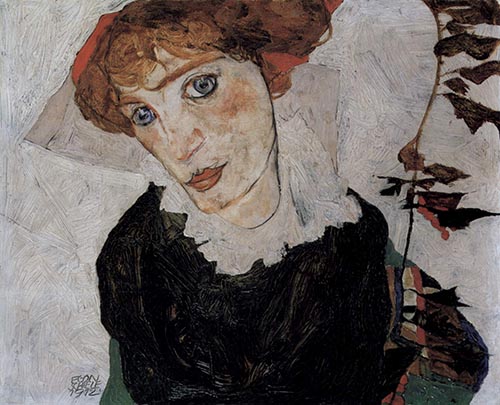
How to observe paintings – the role of the portraiture in art
ArtWizard 27.07.2020
"When you start with a portrait and search for a pure form, a clear volume, through successive eliminations, you arrive inevitably at the egg. Likewise, starting with the egg and following the same process in reverse, one finishes with the portrait."
Pablo Picasso
Portraiture in art has been used form very ancient times. It can be found even in the prehistoric times, but flourished in ancient Egypt and ancient Rome. It has been a way to depict people and objects before the photography has been invented. But portraits have always been much more than just a record. In our previous article we discussed how the artists depicted their inner selves while making their self- portraits. Portraits of sitters other than the artists have been used to show the power, wealth, importance, beauty, character, taste or a range of other features of the sitter. In most cases, especially when made on commission, portraits, including group portraits of wealthy families have been flattering and depicting the sitters in their best possible appearances.

Hans Holbein, Christina of Denmark, Duchess of Milan
The portrait of the elegant 16 years old Christina of Denmark, was the result of a three years old commissioned sitting. At times where there was no photography or video, portraiture played also a very significant role in marriage negotiations and especially in this case, Christina has been regarded as a potential bride of Henry VIII. The teal-blue background holds her shadow in the same way that a shadow is shown in the portrait of Lucian Freud of his friend, the photographer Harry Diamond, adding to both sitters’ portraits some extra presence and volume. Christina is painted onto three joined vertical pieces of wood. Despite the appearance of the widow clothes the fur lining of her sumptuous silk overgarment speaks about her wealth and very high status.
It is interesting to observe how sometimes artists who painted more truthful portraits have been rejected by the persons commissioning such works. There have always been however exceptions, and an example of such works can be seen in the works of Francisco Goya and his portraits of the Spanish family at the time.
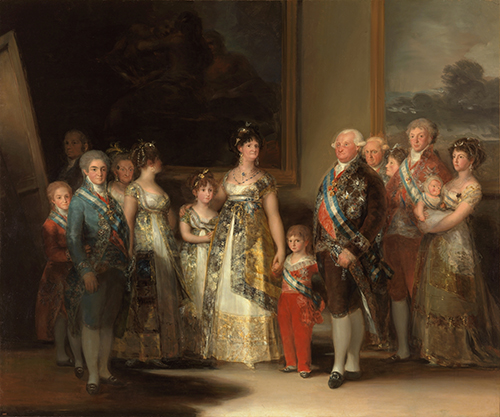
Francisco Goya, Charles IV of Spain and His Family, 1800-1801
Francisco Goya painted this realistic life-sized portrait of the Spanish royal family just one year before he was officially appointed as the court royal artist. The group family portrait features the royal family in rich fashionable clothing and with lavish jewelry, where foremost at the painting is depicted Charles IV, King of Spain, and his wife Maria Luisa de Parma, surrounded by their children and relatives.
Regardless of the way they are painted, portraits have always been, besides works of art, also the only way to remember someone and stop the time in a metaphorical way. In modern times, the artists made portraits no because someone had to be remembered but to express their artistic visions and make their mark in art history.
Thus, portraits made on commission became rare and instead, artists started painting portraits of their friends and lovers in whatever way they pleased, thus making them unique and very much linked to their own individual artistic style. An example of such works can be found in many modern late classical or modern artists. Egon Schiele, for example, had the habit to paint portraits of himself, but also of erotic scenes with women.

Egon Schiele, Two Women Embracing, 1915
A nude and very explicit portrait of Schiele of two women embracing was one of the artists' characteristic styles of painting. For that, he was expelled from one of the small cities where he lived and worked at a certain moment of his life.
Schiele painted a lot of portraits, mostly nudes of this lover Wally, whom he met when he was 22 and she was 17. She became his lover and model for several years, depicted in a number of Schiele's most striking paintings. The painting Portrait of Wally is one of the rare ones she is depicted as a close to classical portrait composition.
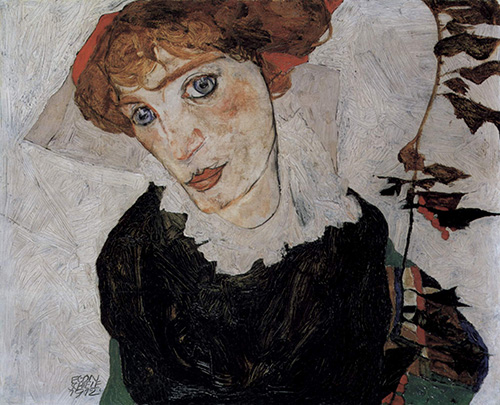
Egon Schiele, Poritrait of Wally, 1912
One of the artists painting portraits extensively was also Lucian Freud. His expressionist nude portraits made him unique and one of the most influential artists of the 20th century.
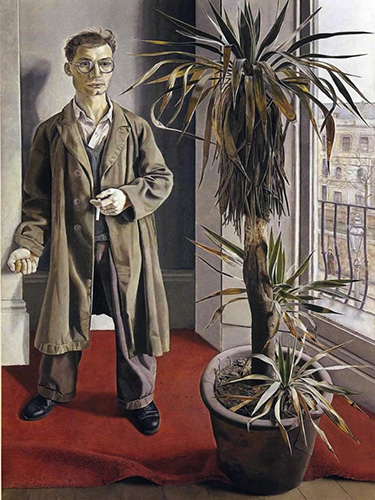
Lucian Freud, Interior of Paddington, 1951
In this Freud’s painting, his friend, the photographer Harry Diamond is shown wearing a raincoat indoors. It looks strange, but with time this raincoat became one of the Diamond trademark identities. Beneath the coat, the slim figure of Diamond and his gaunt features make him appear older than his 27 years at the time. This portrait took six months of the time of Freud to complete it, but it became one of the most known portraits of his friend, also adding to the specific artistic style of Freud, whose very realistic, sometimes brutal figures made his unique famous style.
Pablo Picasso was also one of the famous artists who used the portraiture to express his unique style and even his political views. Most depictions of Picasso’s women, however bizarre they appear, are portraits of his lovers. One of the most striking portraits of a woman his long-lived with and then abandoned is the series of portraits of Weeping Women, where he depicted the artist and photographer Dora Maar. She was Picasso’s long-time lover and the muse of the series of portraits of Weeping Women Picasso made as a response to the atrocities of the Spanish Civil War in 1937 when the air force of Nazi Germany bombed the Basque town of Guernica. Picasso responded to the massacre by painting the large anti-war mural named Guernica, part of which are the Weeping Women portraits.
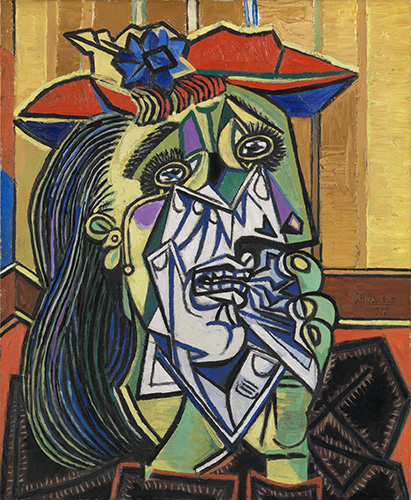
Pablo Picasso, Weeping Woman, 1937
As we observed how the portraiture was playing a role in art but also in people’s lives, from marriage negotiations and expressing someone’s wealth or importance in society to pure nudes and politically depicted objects, we will examine some details as to how different features in portraiture play a role in the appearance of the artworks to the viewers and what are the features the viewers need to learn to search for in viewing portraits of different artistic styles.
